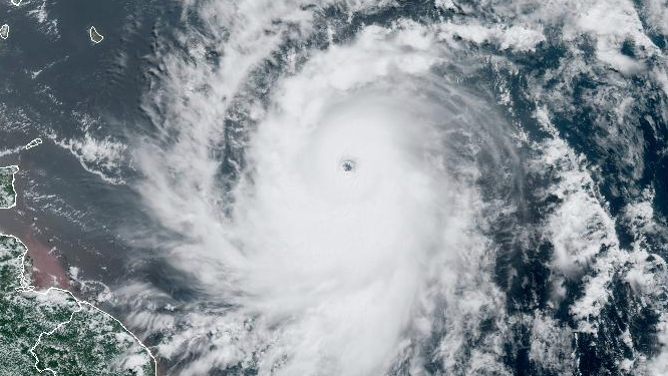Beryl: The Earliest and Fastest-Intensifying Category 4 Hurricane in Atlantic History Sparks Concerns Over Climate Manipulation
Beryl, a rapidly intensifying tropical cyclone, has made history by becoming the earliest and fastest-intensifying Category 4 hurricane ever recorded in the Atlantic. The storm's rapid development from a tropical storm to a major hurricane in just 24 hours has left meteorologists and climate experts stunned, while also
Beryl, a rapidly intensifying tropical cyclone, has made history by becoming the earliest and fastest-intensifying Category 4 hurricane ever recorded in the Atlantic. The storm's rapid development from a tropical storm to a major hurricane in just 24 hours has left meteorologists and climate experts stunned, while also fueling speculation and concern among the public about the role of geoengineering, solar engineering, and weather modification in this unprecedented event.
Beryl's rapid intensification has raised eyebrows and questions about the potential influence of human-induced climate manipulation on the storm's development. Some social media users and conspiracy theorists have pointed to the storm's unprecedented behavior as evidence of secret government programs aimed at controlling or modifying weather patterns for various purposes, including military operations, climate change mitigation, or even population control.
While there is no concrete evidence to support these claims, the rapid intensification of Beryl has undoubtedly added fuel to the fire of an already heated debate surrounding the ethics and potential consequences of geoengineering and weather modification. As climate change continues to accelerate and extreme weather events become more frequent and severe, the pressure to explore and potentially implement large-scale climate interventions is mounting.
However, the scientific community remains cautious about the potential risks and unintended consequences of such interventions. Many experts argue that the focus should be on reducing greenhouse gas emissions and transitioning to renewable energy sources, rather than relying on unproven and potentially dangerous geoengineering techniques.
As Beryl continues to churn through the Atlantic, the debate over the storm's origins and the role of human intervention in its development is likely to persist. While the truth behind Beryl's rapid intensification may never be fully known, the storm serves as a stark reminder of the increasing unpredictability and severity of extreme weather events in a rapidly changing climate.




